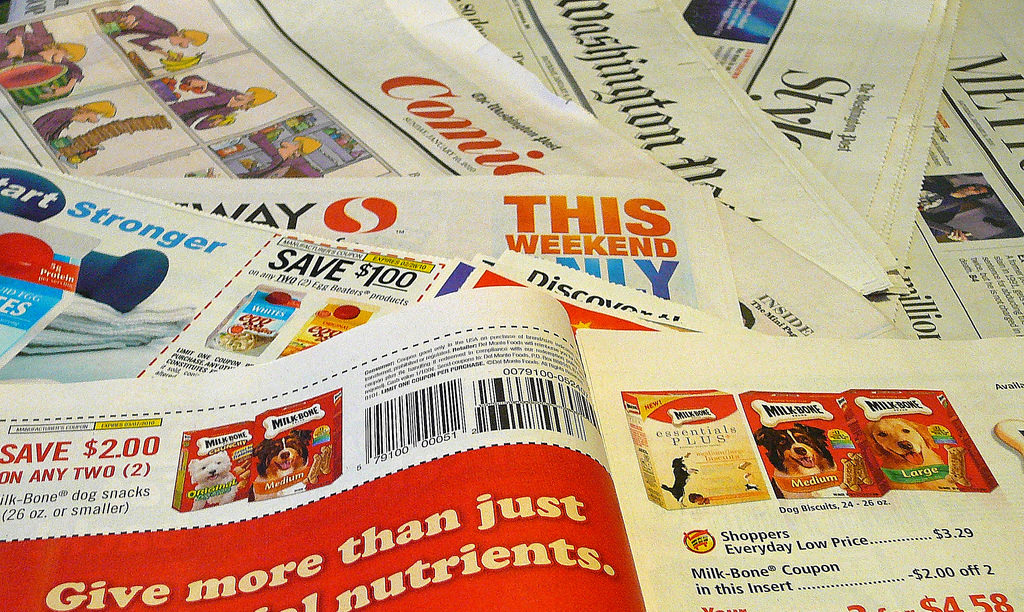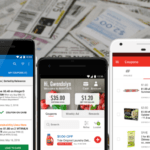
Remember when millennials, those young digital natives glued to their cell phones and disdainful of old-school dinosaurs like newspapers and printed coupons, were going to change couponing as we know it? Well, it turns out they grew up, got married, had kids and took out a mortgage – and realized that those pesky little scraps of paper are worth much-needed money in their pockets.
There’s also that small matter of the coronavirus pandemic and the severe economic impact it’s had. Taken together, it seems that coupons – both paper and digital – are becoming more important than ever.
That’s the key conclusion reached in Valassis’ “2020 Consumer Intel Report” (previously known as the Coupon Intelligence Report). And it comes in stark contrast to one industry leader’s recent prediction that 91% of all coupons in existence will wither away and become extinct within the next 18 months.
The annual survey found that interest in couponing has perked up, after a sharp decline in recent years. Overviews of coupon stats from the past year had already revealed that coupon usage and availability had both plummeted – again – in 2019. And Valassis’ report, originally set to come out in the first quarter of this year, was likely to conclude the same thing.
But “little did we know what storm was brewing,” Valassis Chief Marketing Officer Michelle Engle said in the report’s introduction. Once the coronavirus came along, Valassis ended up delaying the report’s release and conducting a followup survey last month, to gauge how shoppers’ coupon usage has been affected by the pandemic. And “the trends we are seeing give us hope,” Engle said.
The updated report found that 70% of shoppers surveyed said they have increased their saving behaviors during the pandemic. Among age groups, millennials are most likely to seek out savings, with 81% saying they’re doing so more often. And the vast majority of all shoppers – especially those who have experienced a layoff or reduction in income – expect to continue these behaviors over the next year.
“Saving money with coupons and discounts mattered pre-pandemic,” the report noted. “But it’s a clear priority now.”
And paper coupons in particular are far from extinct, Valassis found. While the popularity of digital coupons continues to increase, “consumers still rely heavily on paper coupons, and they continue to account for the largest share of coupons distributed and redeemed.” 71% of shoppers surveyed mid-pandemic said they use paper coupons. That’s down from 77% last year, and well off the recent peak of 93% in 2018.
But millennials are once again the most eager savers, with 87% saying they use those supposedly antiquated paper coupons – about equal to the percentage who use digital coupons. And, of particular interest, “engagement with paper and paperless coupons/discounts has increased,” Valassis found, with 60% of all shoppers saying they use both paper and digital coupons to save money when grocery shopping.
Part of the reason paper is still popular, is that paper coupons often come directly to you, while digital coupons still require some work on your part. Despite some recent efforts to make digital couponing more seamless and effortless, you generally still have to scroll through a digital coupon gallery or actively seek out digital offers, which may or may not still be there the next time you look. That’s why direct-mailed paper coupons are most popular among the shoppers surveyed by Valassis, followed by coupon inserts delivered in the Sunday newspaper. Digital coupons, despite their growing popularity, are in third place.
That said, digital coupons have at least one distinct advantage over paper – and shoppers are well aware of it. Unless you still carry a coupon binder around everywhere you go, it’s a lot easier to clip a digital coupon on the fly than it is to sift through your entire stash of paper coupons when you come across a potential deal in store. Millennials, those increasingly-savvy-shopping, paper-coupon-appreciating consumers, “are far more likely to use mobile devices to search for coupons and even compare prices while shopping,” Valassis’ report found. More than three-quarters of millennials say they use their devices to download digital coupons while they’re in the grocery store. “Retailers should accommodate these behaviors by building a digital experience to meet these shoppers where they are,” Valassis advised.
Overall, “be it paper, digital, or some other variety of discount, coupon use continues to influence and enable buyer behaviors,” the report found. Nearly half of shoppers surveyed said they would shop online more if they could use more coupons. More than half said they will only buy a product if there’s a coupon available for it. Two-thirds said they decide where to shop based on where it’s easiest to use coupons. And three-quarters take coupons into account when deciding what to add to their shopping list.
Couponing, like a lot of everyday pre-pandemic activities, took a serious hit in the early stages of the crisis and the corresponding lockdowns. “This could be attributed to a variety of factors, including desired items being out of stock and an increase in online shopping,” as well as “extended periods of store closures and reduced shopping hours,” Valassis’ report surmised.
But, as others have noted, coupon use soared during the Great Recession a dozen years ago. So if the economic effects of the pandemic continue to linger, we’ll likely see a similar uptick in couponing in the months, and perhaps years, ahead. Already, nearly half of shoppers surveyed said they now plan all of their shopping around coupons and special offers.
“Although these are still uncertain times, a rebound will come,” Engle predicted. So she’s calling upon brands and retailers to step up their couponing game and give shoppers what Valassis’ survey clearly shows they want. “Let’s give consumers the sense of normalcy and value they crave,” she urged. “Whether ‘normal’ returns to what it once was, or ends up looking completely different,” the report concluded, “shoppers will remember the manufacturers and retailers that delivered for them along the way.”
So let that be a lesson to brands and stores who may have gotten stingy with the coupons and discounts during the coronavirus crisis. They might like the idea of charging full price now, but given shoppers’ renewed interest in couponing – they just might regret it later.
Image source: Flickr/F Delventhal











Not to mention the brand new Unilever insert coming in this Sunday’s paper! I don’t think Unilever would create their own P&G brand saver if they planned to stop issuing paper coupons within the next couple of years.